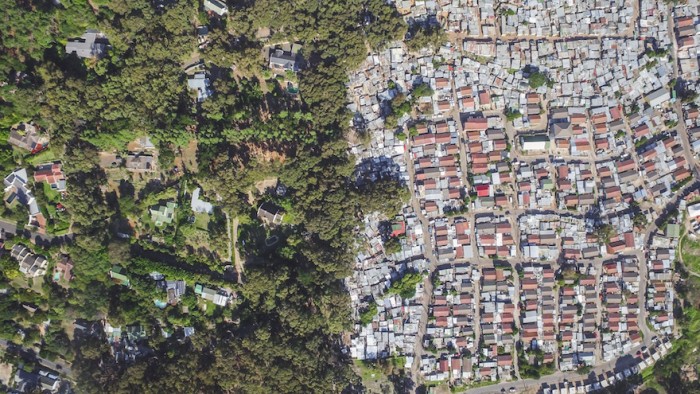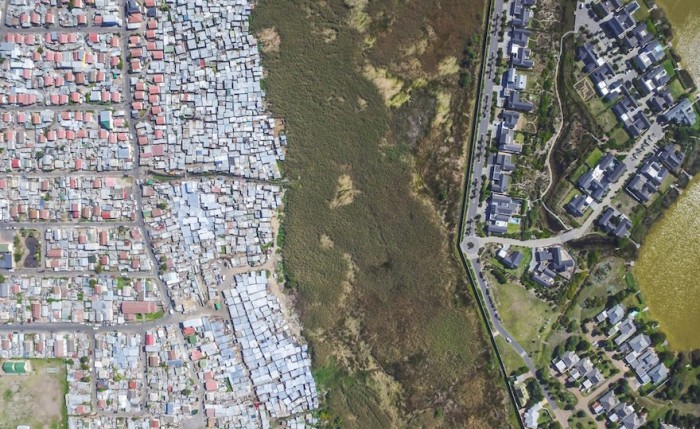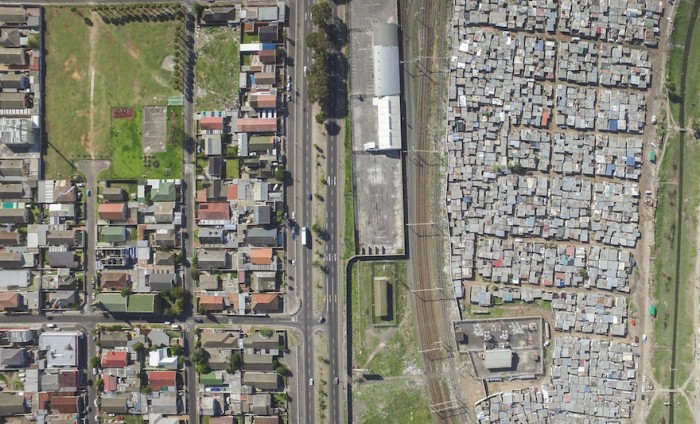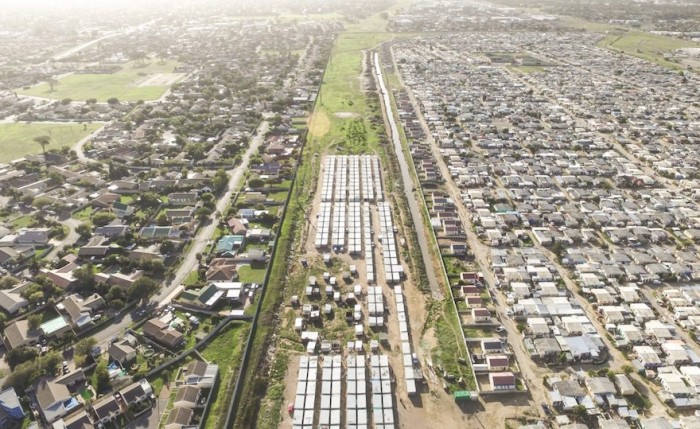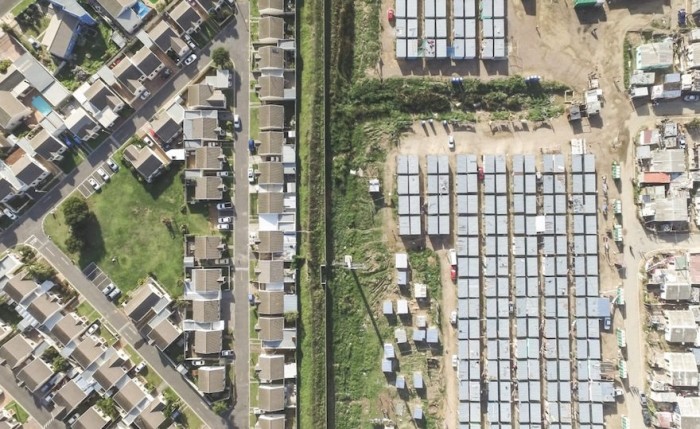From the Series
The legacy of the Apartheid regime is often spoken of in terms of the divide it left behind in South Africa’s economic structure. The national system of racial oppression left people of colour without access to adequate jobs, housing, education, or healthcare. Now, 21 years after the abolishment of the oppressive regime, its remnants can still be seen in the country’s spatial planning. In a photo series titled Unequal Scenes, photographer Johnny Miller presents the greenbelt between wealthy gated communities and poor informal settlements of Cape Town as seen from the air.
During the Apartheid regime, towns and cities were constructed using buffer zones of land, bush, or infrastructure to separate the haves from the have-nots, systematically pushing people of colour out of the inner cities where they could easily be dislocated and controlled. While movement is no longer restricted by law, sprawling informal settlements are still largely occupied by black and coloured people.
“Many people who have seen the photos, including myself, told me that to see it from the air, was a perspective that they had never seen before,” explains Miller.
His first photographs focussed on the two communities, Masiphumelele and Imizamo Yethu, both informal settlements located close to wealthier neighbourhoods. “This series immediately went viral,” he adds.
Speaking to the University of Cape Town, his alma mater, Miller said his aim was to encourage a dialogue about the discrepancies in how people live in Cape Town.
“The legacy of apartheid and specifically the architecture of separation provides a unique context in which to view this particular form of inequality,” Miller was quoted as saying. “Not only that, but the extreme inequalities are usually not present in other parts of the world. For example, you can see in Imizamo Yethu, how the shacks – literally, tin shacks – exist just metres away from very wealthy houses with swimming pools.”


